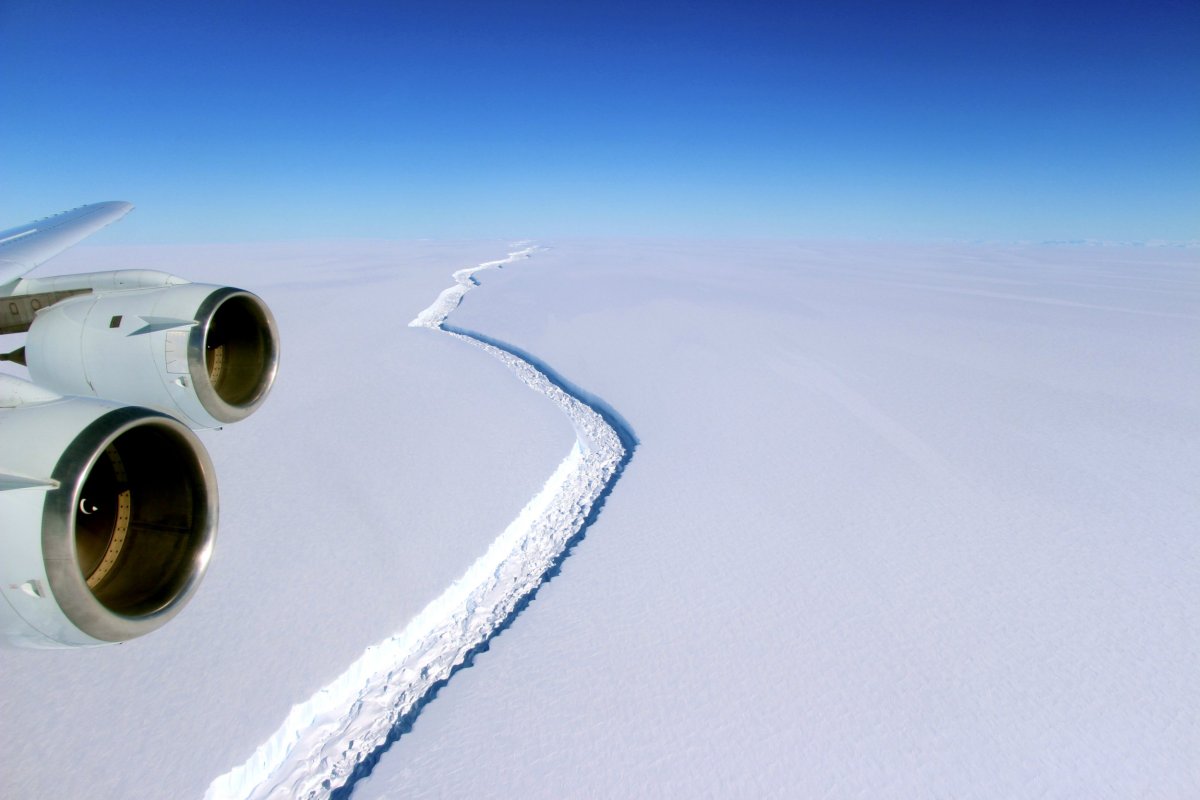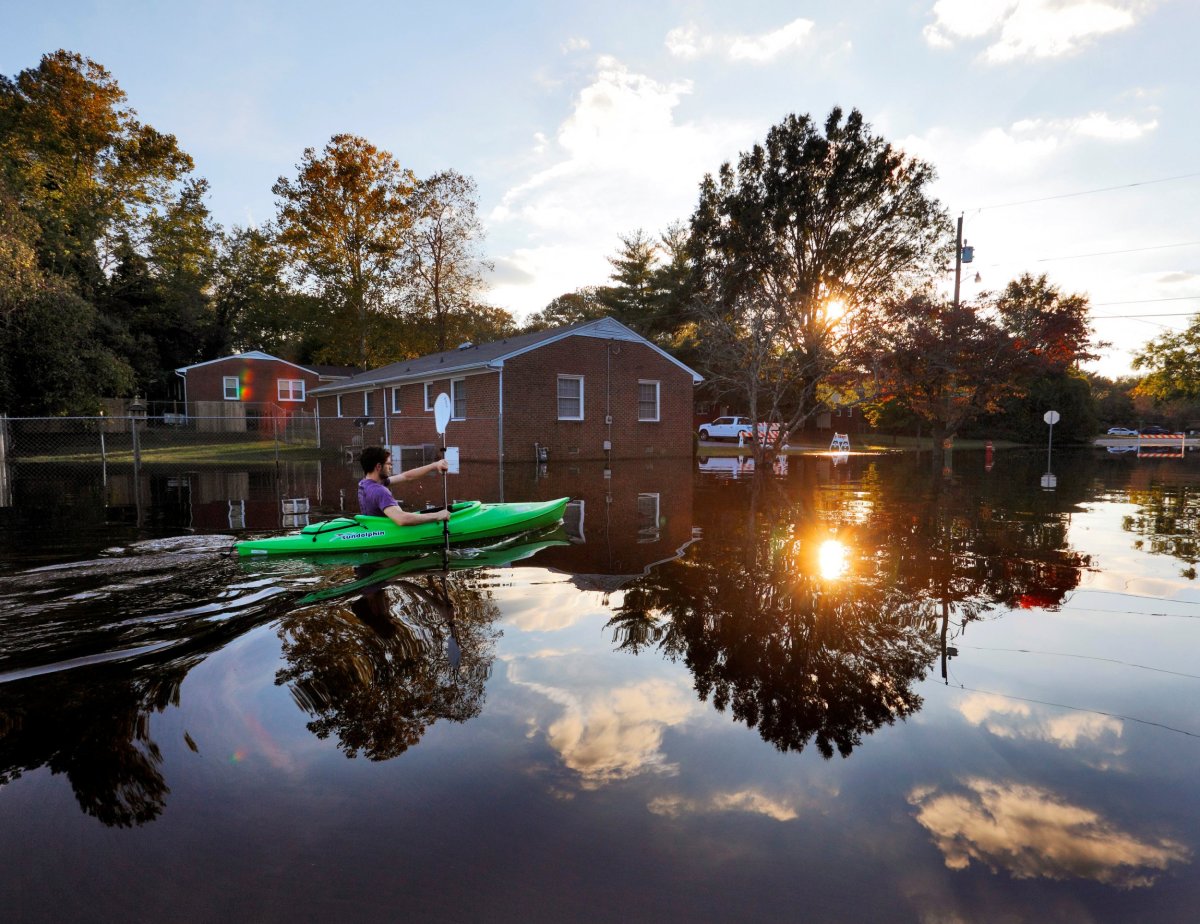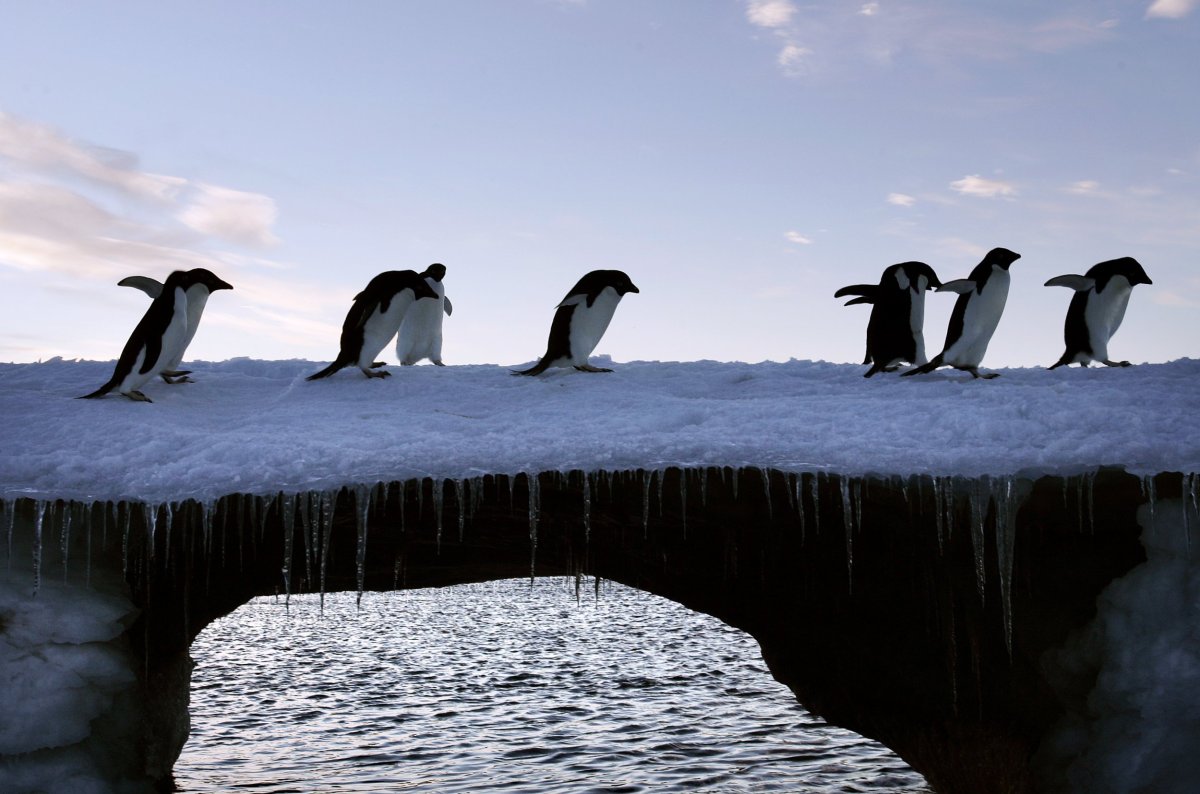
The Antarctic ice sheet extends nearly 5.4 million square miles—around the same amount of land as the contiguous U.S. and Mexico combined. That's massive—and the Antarctic sheet, along with Greenland's ice sheet, holds 99 percent of the freshwater on Earth. Both, however, are melting rapidly, which will result in sea level rise that will inundate land where millions live.
But how much and how soon is uncertain, and that's in part due to the instability of the Antarctic ice sheet.
Scientists likely won't be able to determine what scenario will play out on Earth until the 2060s, according to a study published Thursday in the journal Earth's Future. That doesn't mean coastal communities should plan for the least drastic scenario, but rather, those cities should have flexible plans for outcomes that could happen by 2100 and beyond.

"There's a lot of ambiguity in post-2050 projections of sea-level rise and we may have to live with that for a while," Robert E. Kopp, lead author and Earth and planetary sciences professor at Rutgers University, said in a statement. "We could end up with 8 feet of sea level rise in 2100, but we're not likely to have clear evidence for that by 2050."
Sea level rise of 8 feet by 2100 would inundate land where up to 236 million people live, according to the most severe scenario described in this study. The less severe scenario would submerge land that is home to 100 million people with 2 feet of sea level rise. Around 6 feet of rise would inundate land home to over 150 million people.
Kopp's previous research was largely in line with the Intergovernmental Panel on Climate Change's projections, which found that the global sea level rise in a high-emissions future would result in 2 to 3.5 feet of rise by 2100. This new study doubles that prediction.

What's new is that these projections consider two aspects of the glaciers' instability—which the IPCC doesn't include in its projections. Those two factors are hydrofracturing and ice cliff instability. Hydrofracturing occurs when rainfall (which will happen more in a warming climate) or melting water pools up on the surface and drains into cracks, which can fracture the ice. That process was implicated in the breakup of the Larsen B ice shelf in 2002.
Ice cliffs, newly exposed ones in particular after ice shelves fall off, can tower 300 feet high. The weight of the ice can cause them to collapse under their own weight—similar to what would happen to the ice "wall" from Game of Thrones if it were real. This is "a phenomenon currently observed only in some narrow glacial channels in Greenland," Kopp wrote in his blog post about the study.
"The ice shelves are the key," Robert M. DeConto, co-author and climatologist of the University of Massachusetts Amherst, who developed the ice sheet model that included these two factors, said in a statement. "They hold back the flow of Antarctic ice toward the ocean, so we don't want to lose them. The problem is, they don't last very long when they are sitting in warm water or if they are covered with summer meltwater, so keeping global temperatures in check is critical."

The loss of Antarctic ice shelves could "spell disaster for our coastlines," he said.
This week—on the other side of the globe from Antarctica—a report found that the Arctic shows "no sign of returning to [the] reliably frozen region of recent past decades," according to the National Oceanic and Atmospheric Administration. Surface air temperature for the year ending in September 2017 is the second warmest since 1900. The Arctic tundra has more green areas and record permafrost warming—which could unleash long-frozen diseases. And the sea surface temperatures in the Barents and Chukchi seas were up to 7.2 degrees Fahrenheit warmer than average this August.
Another recent study found that Greenland's ice sheet was melting 80 percent quicker between 2003 and 2014, compared to the 26-year period before, reported Vox.
There is a silver lining to the seeming doom of sea level rise, according to Kopp's research. Hitting the Paris agreement goals of reaching net zero emissions by the second half of the century would make the ice cliff instability largely irrelevant and keep sea level rise in the range of 1 to 3 feet this century.
Following the more ambitious path of the Paris agreement of a 1.5 degrees Celsius world, according to another recent study co-authored by Kopp published Wednesday in Environmental Research Letters, would cause a peak sea level rise of about 0.7 inches per decade less than a world warmer by 2 degrees Celsius. That would be a life-saving reduction of sea level rise for coastlines. A net zero emissions world is what is necessary in order to stabilize climate, according to Kopp.
"Thinking in terms of emissions is really more valuable than thinking in terms of temperature because it's emissions that we have direct control over," Kopp told Newsweek.
Uncommon Knowledge
Newsweek is committed to challenging conventional wisdom and finding connections in the search for common ground.
Newsweek is committed to challenging conventional wisdom and finding connections in the search for common ground.
About the writer
Sydney Pereira is a science writer, focusing on the environment and climate. You can reach her at s.pereira@newsweekgroup.com.
To read how Newsweek uses AI as a newsroom tool, Click here.








